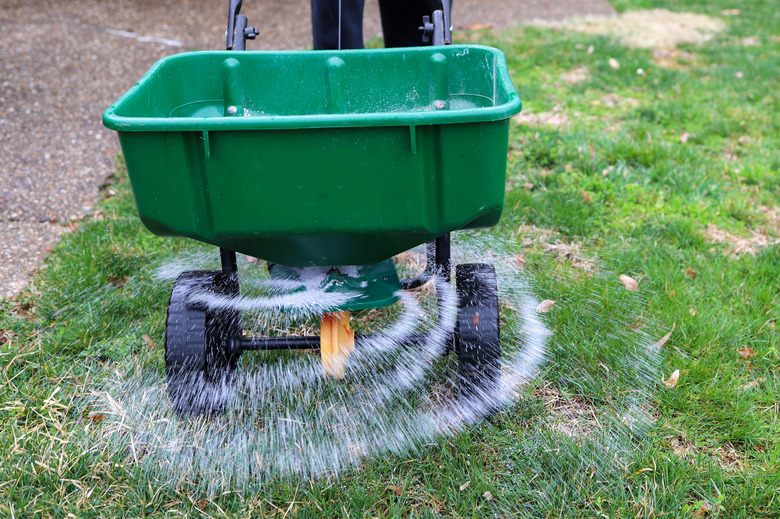How To Apply Fertilizer To Wet Grass
Do you drive down your street on a summer's day and marvel at the green lawns spread out before you and wonder: "why doesn't my grass look that good?"
The first answer that springs to mind is that grass, like people, needs enhancement. We stuff vitamins into our bodies to stay healthy. Grass needs fertilizer.
Many questions arise about the application of fertilizer: What time of day should you apply it? Should the grass be dry or wet? Should you cut the grass first? Spread it over newly laid grass?
Again, like vitamins, fertilizers need to be fed to the grass at specific times and in specific scientific ratios. Lawns in the North differ in their requirements when compared to Southern lawns. Reading the bag of fertilizer not only tells you what your climate-specific lawn needs but how and when to apply it.
Fertilizing a lawn isn't rocket science. All you need is water and the fertilizer, like taking those vitamins. But timing is crucial. Take a peek at the weather report for the next few days to find out if fertilizing your lawn before or after a rain is the best idea.
Tip
Keep a schedule and fertilize the lawn four times a year with the appropriate solution, depending on your location. The garden center in your area stocks the fertilizer that is best for your climate. Not all fertilizer is blended for the entire year. Grass has different needs at different times of the year.
Preparing the Lawn for Fertilizer
- A few days before applying the fertilizer, mow and rake the
lawn and water the grass. Putting fertilizer on freshly cut grass helps the blades absorb the nutrients.
- If you're using a combination of "weed and feed"
to kill two birds with one stone, the chemicals targeting the weeds will stick to the blades of the weeds if they are wet, bringing with it a quick death. Water again two days after fertilizing.
- If you're experiencing drought, postpone your fertilizing
routine until you're permitted to water the grass. Bob Vila writes that dry earth traps the fertilizer on top, which can burn the grass.
- If the weather report surprises you and a torrential rain
moves in just after fertilizing, the fertilizer will be washed away. You must then repeat the process.
- Also, if a cold front moves in and the soil freezes, the
grass can't absorb the nutrients.
Warning
Granular fertilizer can easily harm grass if it is applied when the grass is wet. If your mornings are foggy and damp, avoid granular fertilizer and use liquid. Do not apply any fertilizer if the ground is soggy. It'll just run off or leach into the soil so deeply that the roots do not benefit.
The Best Time to Fertilize
Spreading grass fertilizer in the rain generally isn't the best idea. Not only will you run the risk of getting sick, but the fertilizer application is also wasted.
If a heavy rain damages your grass and the nutrients are lost, choose a fertilizer that's formulated for wet grass.
Fertilizing Before a Light Rain
If you live in an area that frequently gets a gentle rain, coordinate your fertilizing to begin just before that rain. A light rain can help dissolve the fertilizer and drives it deeper into the soil, activating the nutrients that help feed the grass.
What time of the day should you fertilize?
You should try to fertilize in the late afternoon or early evening while there is still light out.
If there is still hot direct sunlight on your lawn, however, you may want to fertilize later in the day or perhaps wait until another day altogether when temperatures are cooler. Fertilizing when it's too hot out can lead to burning.
